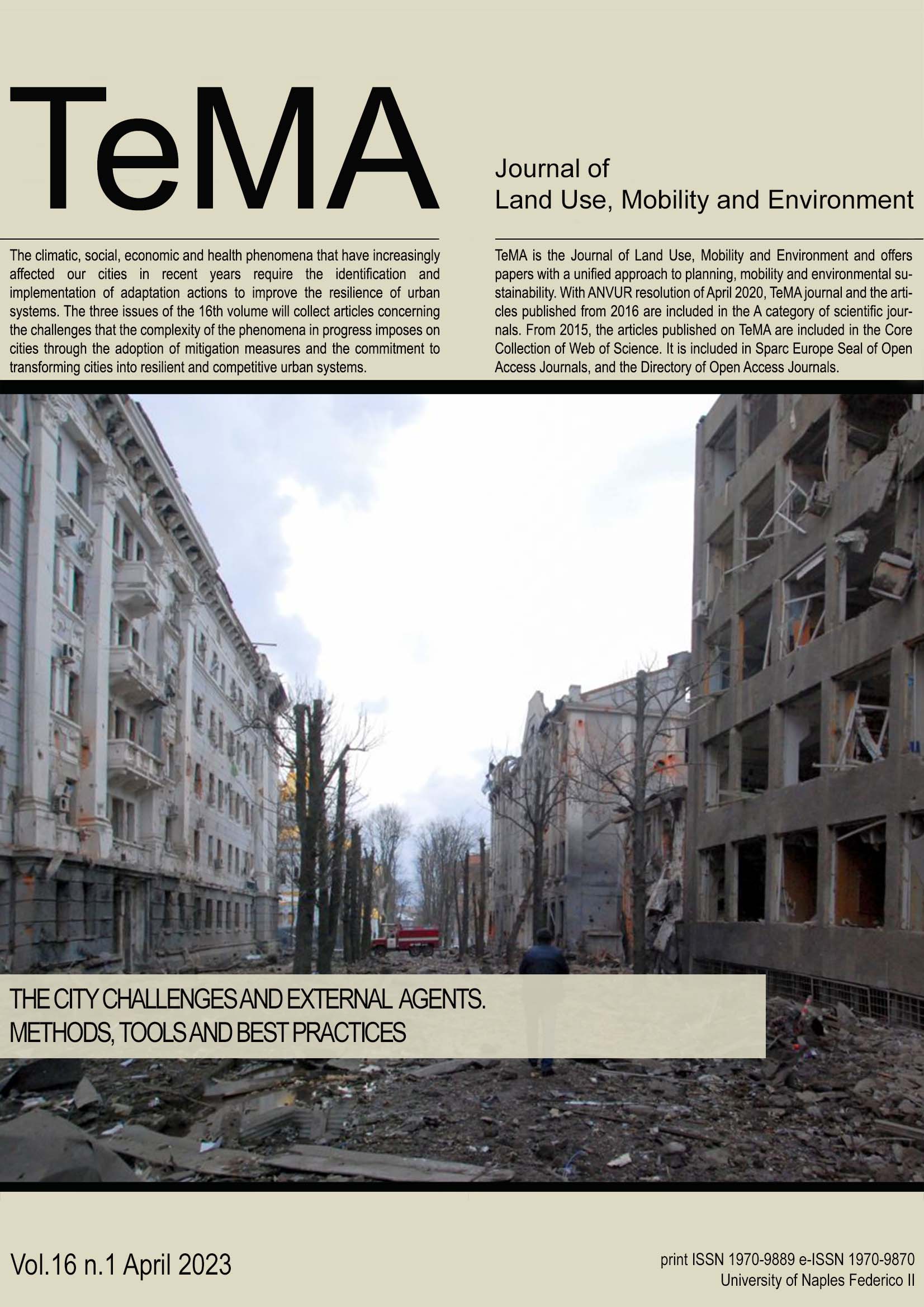Usability and accessibility of urban service areas with increasing epidemics: the case of Bursa/Turkey
The effect of urban service areas on the quality of life in the post-pandemic period
DOI:
https://doi.org/10.6093/1970-9870/9591Keywords:
Quality of life, Urban service areas, Accessibility, SufficiencyAbstract
The concept of urban life quality, which comes to the fore with urbanization and evaluates the effects of environmental variables on the well-being of the citizens in every respect, is directly related to the quality, quantity, and sufficiency of the urban service areas of the cities. In this study, cultural spaces, open spaces, and green areas in the central district of Bursa are classified as 12 types of urban service areas were examined. Within the framework of the method setup, the existence and distribution of urban services were evaluated within the scope of pre- and post-pandemic conditions, and solution suggestions were developed to increase the quality of life. In this context, it was determined that 47 out of 136 neighborhoods did not have urban service areas, and per capita values were found to be sufficient in only 10 neighborhoods. It is seen that these 10 neighborhoods have more recreational activity opportunities compared to other neighborhoods. The systematic method in the study was created in order to evaluate it as a plan base for physical planning studies in the study area and to shed light on the development of suggestions for increasing the quality of life for each city in general.
Downloads
Downloads
Published
How to Cite
Issue
Section
License
Authors who publish in this journal agree to the following:
1. Authors retain the rights to their work and give in to the journal the right of first publication of the work simultaneously licensed under a Creative Commons License - Attribution that allows others to share the work indicating the authorship and the initial publication in this journal.
2. Authors can adhere to other agreements of non-exclusive license for the distribution of the published version of the work (ex. To deposit it in an institutional repository or to publish it in a monography), provided to indicate that the document was first published in this journal.
3. Authors can distribute their work online (ex. In institutional repositories or in their website) prior to and during the submission process, as it can lead to productive exchanges and it can increase the quotations of the published work (See The Effect of Open Access)


